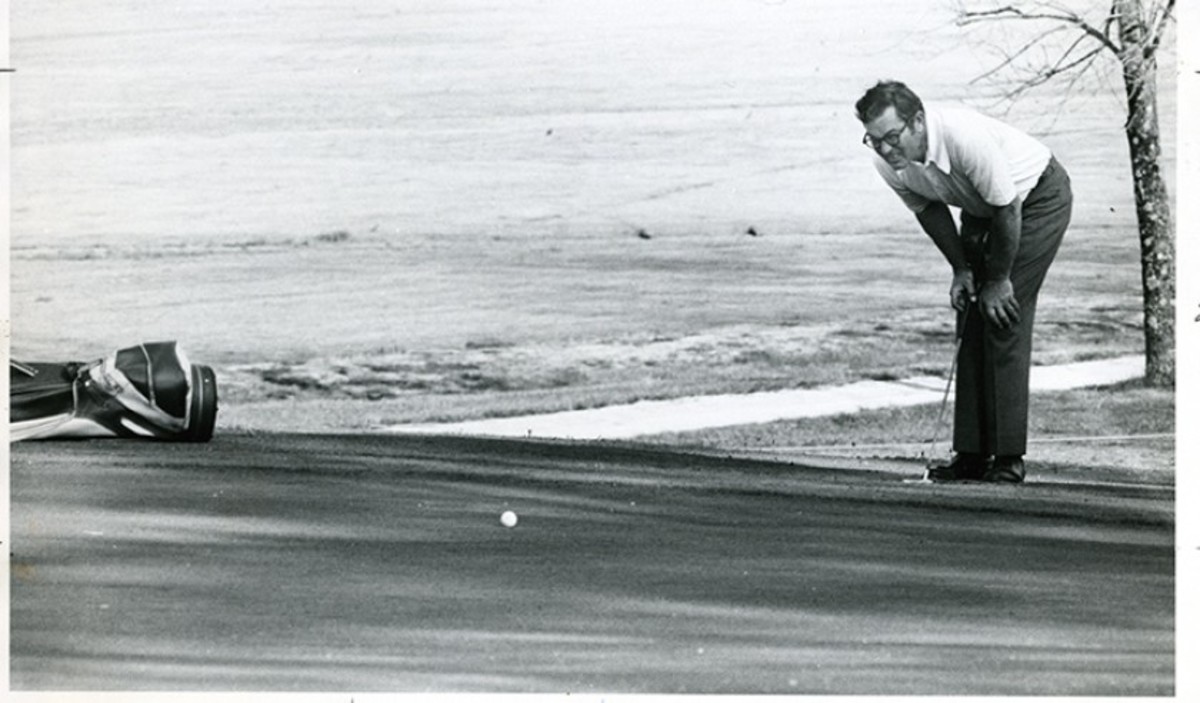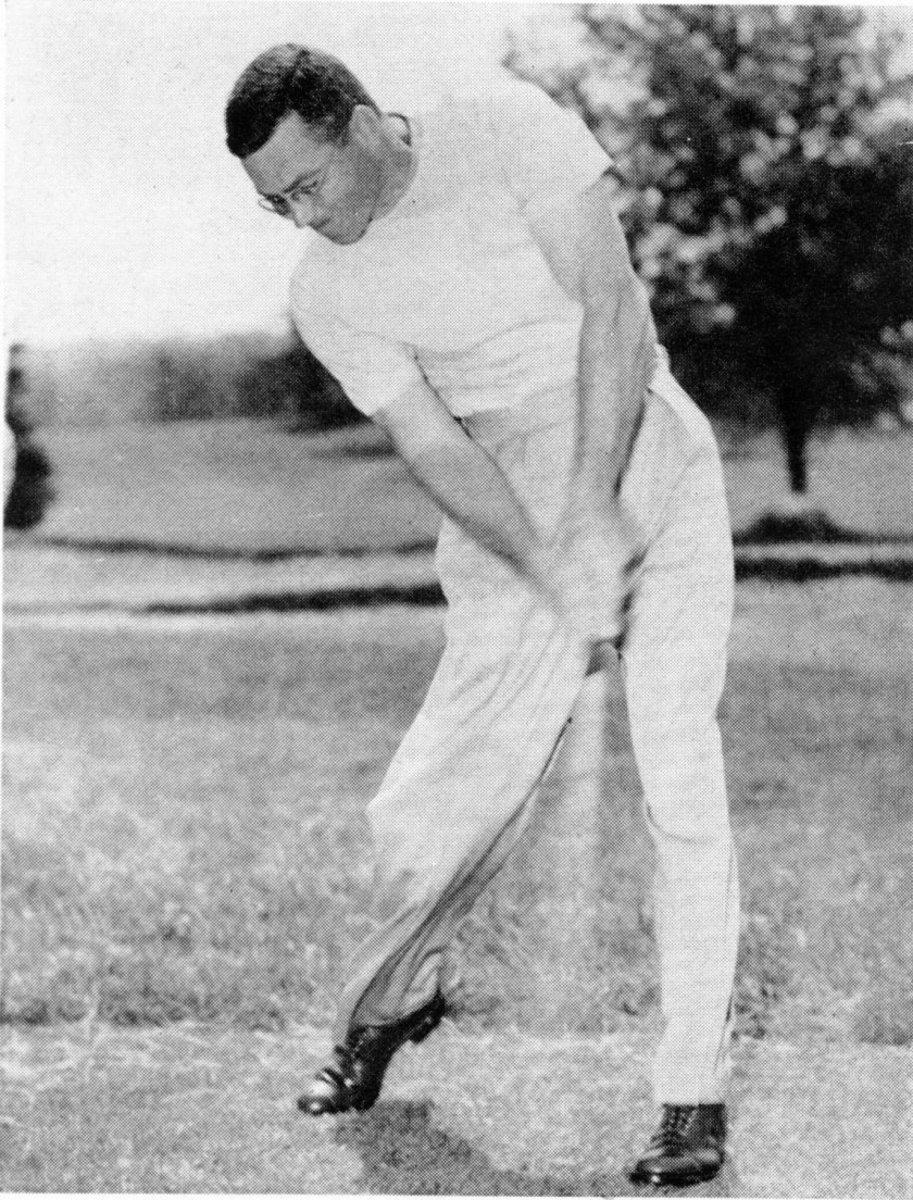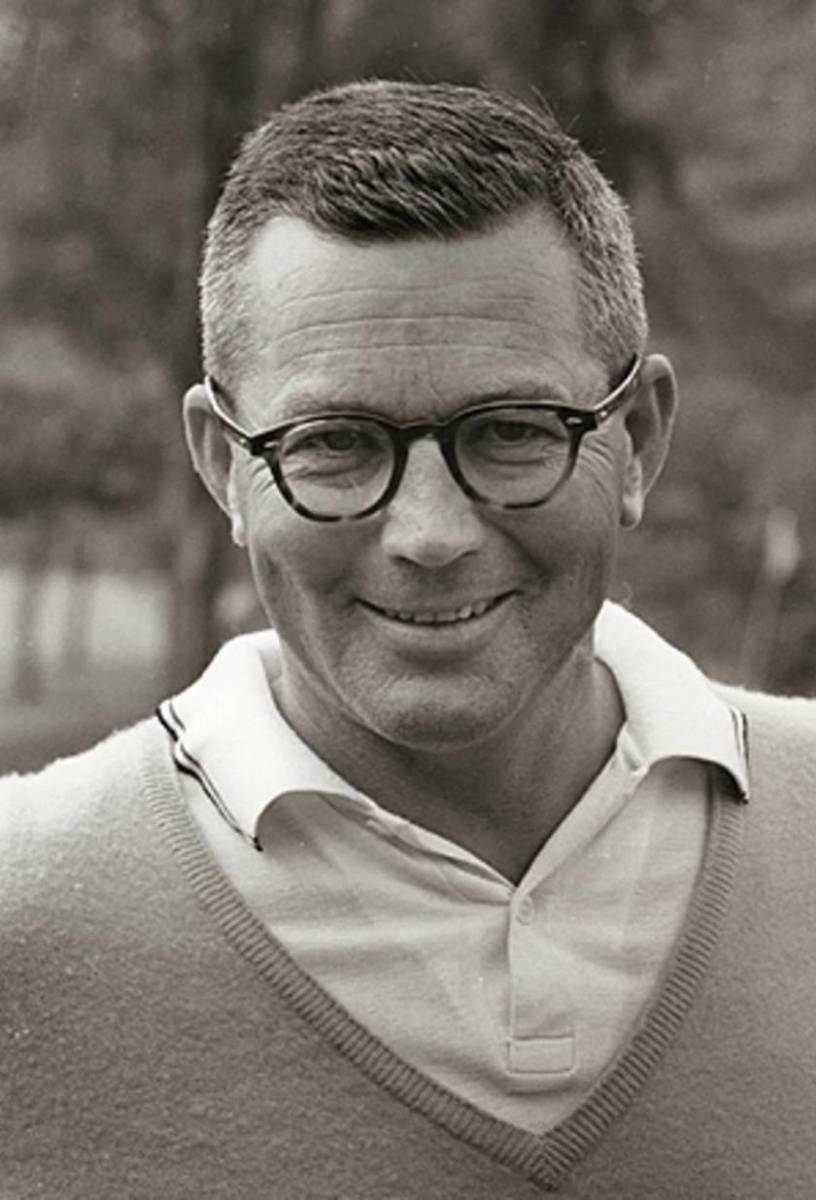Golf News: Billy Joel Patton creates a stir at ’54 Masters

The Masters Tournament always creates an air of excited anticipation, the first major of the year held at a beautiful setting. This year, the Masters, which was scheduled to be played this week, has been postponed because of the coronavirus pandemic. Maybe it can be played in the fall. Or maybe not at all.
But we can relive previous Masters excitement as a partial substitute for the real thing. CBS, NBC and its affiliate Golf Channel and ESPN will devote programming to past Masters Tournaments this week. But in the absence of the 2020 edition, let’s look at the 1954 Masters, which was held in the days before TV brought the event into homes nationwide and might have been one of the most exciting editions ever.

In 1954, expectations entering the second week in April were higher than usual. Ben Hogan was the defending champion after a year in which he also won the U.S. Open at Oakmont and the British Open at Carnoustie, in what would come to be known as the "Hogan Slam." Hogan was the clear favorite, and he had arrived at Augusta National Golf Club two weeks ahead of the Masters to practice.
From the inaugural Masters in 1934, club co-founder Bob Jones intended to host a large contingent of amateurs in the field. Automatic invitations were sent to the present and past U.S. and British amateur champions, plus the Walker Cup team members. As an invitational tournament, the club could invite other amateurs if it desired.
To expand the number of amateurs in the 1954 field, tournament director Clifford Roberts suggested to Jones that alternates for the Walker Cup team also be invited, and Jones liked the idea. The only amateur since the inception of the tournament to come close to winning was Frank Stranahan, who in 1947 tied for second with Byron Nelson, two strokes behind Jimmy Demaret. Roberts and Jones thought that adding the Walker Cup alternates would strengthen the field. In all, 15 amateurs would be in the tournament, including familiar names such as Ken Venturi, Harvie Ward, Dick Chapman and singer Don Cherry.
One Walker Cup alternate was William Joseph Patton, known to all as "Billy Joe," a 31-year-old lumber salesman from Morganton, N.C.
Patton wasn't well known outside of North Carolina, although he had won the Carolinas Amateur and two Carolinas Opens, all solid events, and starred a decade earlier in college at Wake Forest. Patton was long off the tee and an excellent putter, a good combination for Augusta National Golf Club.
Patton readily accepted his invitation. He considered his game to be in good shape and that he had a crack at winning, so much so that he ordered a new white cashmere sport coat to wear at the presentation ceremony. While driving from Morganton to Augusta, Patton composed his acceptance speech. He also developed a game plan for Augusta: bold play, shooting for every pin, no holding back or laying up. Though the rest of the field might have felt the pressure of lining up against Hogan at the top of his game,

Patton felt none; in fact, it was Patton who would apply the pressure to Hogan.
Currently on the Wednesday afternoon of tournament week, a competition is held on Augusta National's Par 3 Course, but in 1954 the short course did not exist. The pre-tournament festivity consisted of an exhibition on the practice range by the Masters contestants, including a driving contest, which Patton entered.
Patton possessed a lightning-fast swing and an odd tilt to his follow-through, but he could blast the ball. He hit his first ball in the driving contest 338 yards. The contest rules allowed for the best of three drives, but Patton turned down the opportunity with the quip, “No, thanks. The next shot, I might miss altogether. I couldn't possibly beat that first one.” And that first one was good enough for Patton to win the driving contest.
Beating the field in the driving contest gave Patton reinforcement that he not only could play with the professionals, but that he could beat them. Augusta National was set up at 6,950 yards, long for 1954 and, as true today, favored the long hitter.
On Thursday, the first day of tournament play, the weather was a mixture of thunder, rain and lightning, and scores were high, but Patton returned a 2-under 70 and tied E.J. "Dutch" Harrison for the lead. Hogan was two back, and Sam Snead, also a tournament favorite, shot 74.
Suddenly, there was a new star, and the press was asking who this guy with the Southern drawl was. Patton seemed to throw a bit of cold water on his lead, commenting, “Now, hold on a minute, boys. Let's not get too strong on this thing. Tomorrow, I may shoot an 80. I probably will."

Patton slipped to 74 on the second day of play but surprised himself with the solo lead at the halfway mark. Hogan was one stroke back.
Patton was exciting to watch. He had proved his length off the tee, but his ball was not always on the intended line. His game had a dramatic uncertainty to it. No one, including Patton, knew where his ball was going to end up on just about any shot. Except for putting. Augusta National's greens have a lot of subtle breaks and rolls, but Patton was making putts and dropping 6-footers as if they were tap-ins.
Patton’s go-for-it style was not unlike what Arnold Palmer would display a few years later, and his talkative manner presaged Lee Trevino's folksy manner. When Patton found himself in the trees, as he frequently did, he'd look for an opening, however small, and go for it, telling the gallery what he was going to do. He had great confidence and was becoming a fan favorite.
On Saturday, Patton posted a 3-over 75, which left him five strokes behind Hogan, who moved into the lead with a 69 and 2-under 214 total, three strokes ahead of second-place Snead.
Patton’s drop-off was not entirely unanticipated. It is not unusual for an unknown to lead early in a big event. As the pressure built, the seasoned players tended to move up the leader board, eclipsing newcomers.
Unlike today, when the leaders tee off last – very convenient for the all-powerful TV broadcasts, which bring in revenue – in 1954, the leaders were scattered throughout the field, spreading out the galleries and making it easier for fans to follow the leaders.
Snead was off at noon, a half hour before Patton and an hour before Hogan. Snead faltered a bit early in the round, and the galleries decided that Hogan was on his way toward winning the Masters for a second year in a row.
Then, there was an explosion of yelling and cheering that rolled through Augusta's hills. Patton had aced the 190-yard sixth hole, his ball hitting the pin 6 inches above the cup and dropping into the hole.
Suddenly, everything was askew, and the tournament opened up. Patton stood 2 under for the day and 1 over par for the tournament, three strokes behind Hogan. No matter how advantageous, a hole-in-one can shake up a player by interfering with his focus. Not Patton. He parred the seventh, and then birdied Nos. 8 and 9, making the turn in 32 to get to 1 under for the tournament.
Patton parred Nos. 10 and 11. Standing on the 12th tee, he was tied with Hogan, who was out in 37, for the lead.
It's a well-worn saying that the Masters begins with the last nine holes on Sunday afternoon, and in 1954, the excitement truly was just beginning.
Patton made a bogey at the par-3 12th and, in keeping with his "full bore, full guts" philosophy, decided to hit a 3-wood to the green at the par-5 13th, which is guarded in front by a small, winding creek. Patton dumped his shot into Rae’s Creek, considered trying to play from the water, but then decided to drop the ball behind the creek and take a one-stroke penalty.
Patton then proceeded to hit a poor pitch over the creek, had to chip to the green and took two putts for a disastrous 7.
At the time, Hogan was standing over his second shot to the par-4 11th green. Instant scoring was not available in 1954. There were few scoreboards, and players often did not know where they stood against the field or the leader, or even who the leader might be. That was Hogan's situation.
Hogan had a game plan for every course he played, and how he would play each hole was mapped out before he stepped onto the first tee. On 11, a pond guards the left side of the green, and the greenside slope can feed the ball into the water. Hogan had said that if you ever saw his ball on the 11th green in two, you'd know he missed the shot. His plan was to play to the right of the green, chip on and make a par.
It was here that Hogan made a disastrous error. He broke with his game plan, pulled out a 3-iron and hooked it into the pond. The result: a double-bogey 6. Afterwards, Hogan said, "If I'd known what happened to Patton, I would have played it safe."
As Patton walked off the 13th green, his large and loyal gallery grew quiet and crestfallen. Patton looked over at them and said, "C'mon, folks. Let's smile again." Then, Patton gave them something to smile about: a birdie at the 14th. He was back in the hunt again.
Patton decided to go for the green at the par-5 15th, requiring a carry over a lake which runs across the entire front of the green. He mis-hit a 2-wood, and his ball splashed into the water. He was on in 4 and two-putted for a 6. His gallery's emotions were bouncing around on the back nine. Patton parred the last three holes for a 1-under 71, but his fabulous day was over. He finished at 290, one stroke behind Hogan and Snead, who had tied for the lead and would return on Monday for an 18-hole playoff.
Snead won with a 70 to Hogan’s 71, but 1954 was Patton's Masters in many ways. Snead and Hogan had played under-par golf in their head-to-head matchup for the Masters title, but all of Augusta was talking about Billy Joe Patton.
At the presentation ceremony, Patton was wearing his new cashmere sports coat. Upon accepting the award for low amateur, at solo third place, Patton showed no remorse for his close call.
"I don't feel bad about that 6 at 15, and I don't feel bad about that 7 at 13, and I don't want my rooters to feel bad about that,” he said. “I told myself I wasn't going around after the tournament thinking I could have saved a stroke if I hadn’t played it bold. So, I played it bold, and the way I made those birdies was the same way I got that 6 and that 7."
The 1954 Masters would be the first of 13 appearances for Patton at Augusta National. Though he would finish eighth in 1958 and 1959, he never got to switch that white sports coat for the green jacket of a Masters champion. He did, however, take low-amateur honors two more times, in 1958 and 1960.
Patton didn't change his style. He always played the swashbuckler, going for the pin, finding an opening in the trees to redeem a wayward shot and never playing safely. Over the years, several groves of trees were designated as “Patton's Woods” by his followers. At one time, Bob Jones jokingly suggested that the grove of pines on the right of the 14th fairway be dedicated officially as "Patton's Woods," because that was where he'd first seen Patton, in 1954.
In June 1954, just two months after the Masters, Patton made headlines again by shooting 1-under 69, the only subpar score, for the first-round lead in the U.S. Open at Baltusrol. Patton would finish sixth. Three years later, in the U.S. Open at Inverness in Toledo, Ohio, Patton shared the 36-hole lead with Dick Mayer, the eventual winner, at 2-under 138. Patton was a true amateur who could hold his own with the game’s top professionals.
Patton never turned professional, choosing to remain in the lumber business and play amateur golf. He competed on five Walker Cup teams and continued winning amateur events, including three North and South titles and two Southern Amateur crowns.
The galleries continued to love watching his bold play and listening to his chatter. Patton, who died in 2011 at age 88, clearly loved playing the game, and the galleries returned the love. A couple of missteps on the back nine on Sunday at Augusta in 1954 couldn’t change that fact.
Sign up to receive the Morning Read newsletter, along with Where To Golf Next and The Equipment Insider.
